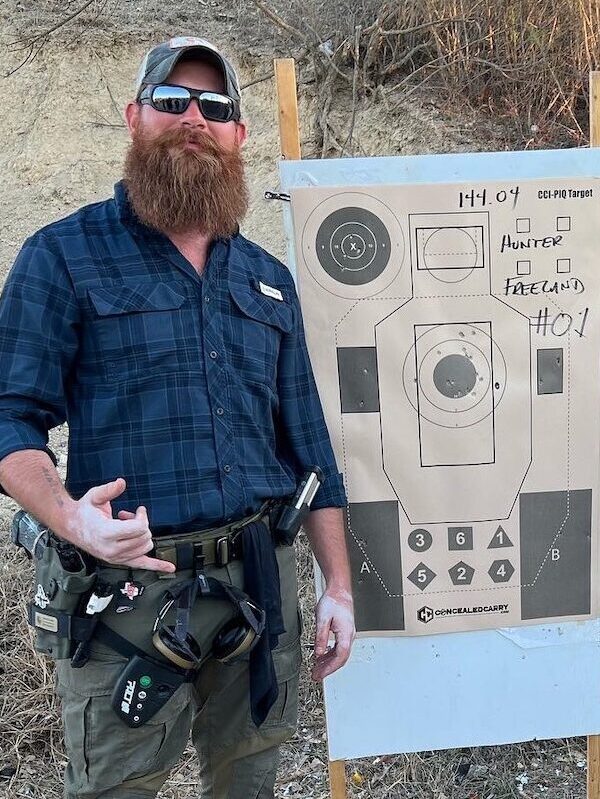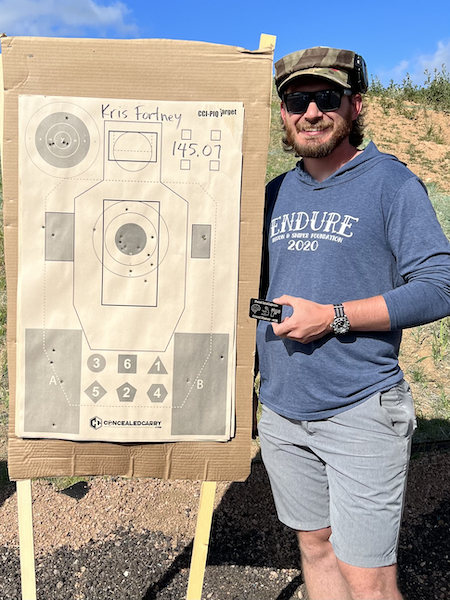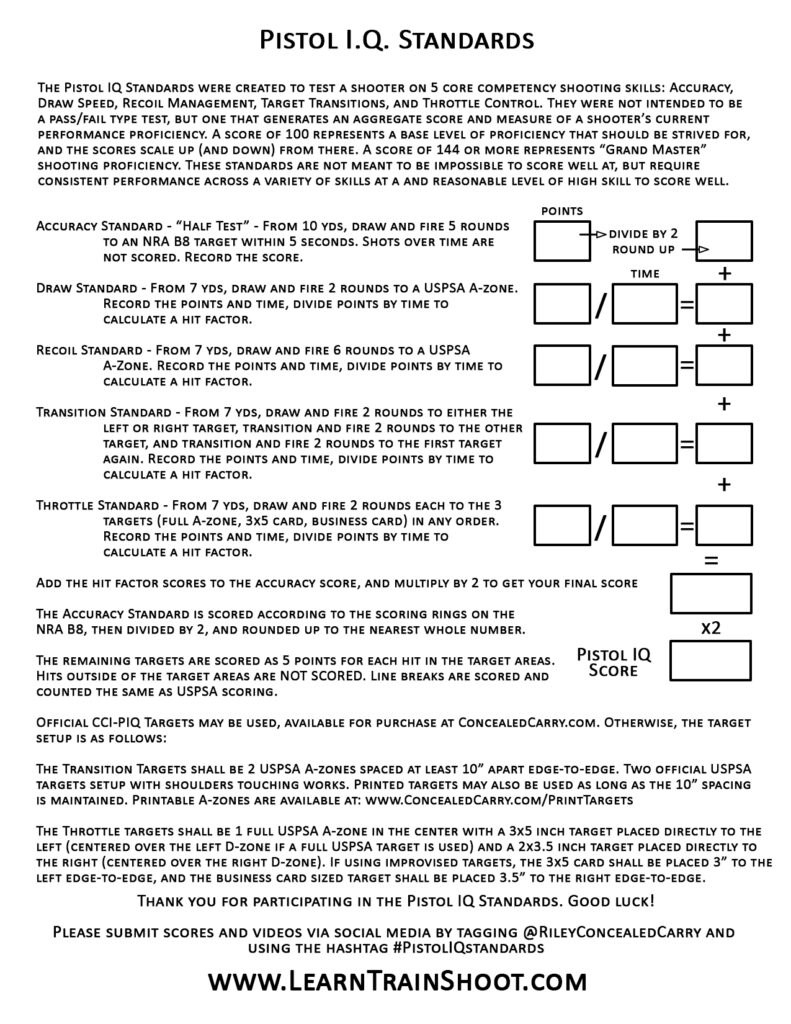What's your Pistol IQ Score?
The Pistol IQ Standards were created to test a shooter on 5 core competency shooting skills: Accuracy, Draw Speed, Recoil Management, Target Transitions, and Throttle Control. They were not intended to be a pass/fail type test, but one that generates an aggregate score and measure of a shooter’s current performance proficiency. A score of 100 or better represents a base level of proficiency that should be strived for, and the scores scale up (and down) from there. A score of 144 or more represents “Grand Master” shooting proficiency. These standards are not meant to be impossible to score well at but require consistent performance across a variety of skillsets at a reasonable level of proficiency to score well.
Accuracy Standard
“Half Test” – From 10 yards, draw and fire 5 rounds to an NRA B8 target within 5 seconds. Shots over time are not scored. Record the score. Divide by 2 and round up to the nearest whole number.
Draw Standard
From 7 yards, draw and fire 2 rounds to a USPSA A-zone. Record the points and time, divide points by time to calculate a hit factor.
Recoil Standard
From 7 yards, draw and fire 6 rounds to a USPSA A-zone. Record the points and time, divide points by time to calculate a hit factor.
Transition Standard
From 7 yards, draw and fire 2 rounds to either the left or right target, transition and fire 2 rounds to the other target, and transition and fire 2 rounds to the first target again. Record the points and time, divide points by time to calculate a hit factor.
Throttle Standard
From 7 yards, draw and fire 2 rounds each to the 3 targets (full A-zone, 3×5 card, business card) in any order. Record the points and time, divide points by time to calculate a hit factor.
Scoring
Add the hit factor scores to the accuracy score, and multiply by 2 to get your final score.
The Accuracy Standard is scored according to the scoring rings on the NRA B8, then divided by 2, and rounded up to the nearest whole number.
The remaining targets are scored as 5 points for each hit in the target areas. Hits outside of the target areas are NOT SCORED. Line breaks are scored and counted the same as USPSA scoring.
If drawing from concealment or duty gear (SLS + ALS minimum) subtract 0.25 seconds from each drill's time.
Scoring Classifications:
144+ points = Grand Master
132-143.99 points = Master
120-131.99 points = ‘A' class
108-119.99 points = ‘B' class
96-107.99 points = ‘C' class
Below 96 points = ‘D' class
The Target Setup
The official CCI-PIQ Target is ideal to use and is available for purchase at ConcealedCarry.com. Otherwise, the target setup is as follows:
The Transition Targets shall be 2 USPSA A-zones spaced at least 10” apart edge-to-edge. Two official USPSA targets setup with shoulders touching works. Printed targets may also be used as long as the 10” spacing is maintained. Printable A-zones are available at: www.ConcealedCarry.com/PrintTargets
The Throttle targets shall be one full USPSA A-zone in the center with a 3×5 inch target placed directly to the left (centered over the left D-zone if a full USPSA target is used) and a 2×3.5 inch target placed directly to the right (centered over the right D-zone). If using improvised targets, the 3×5 card shall be placed 3” to the left edge-to-edge, and the business card-sized target shall be placed 3.5” to the right edge-to-edge.
You can calculate your score using the below web-based calculator as well.
Pistol IQ Grand Masters

#01 – Hunter Freeland
January 30, 2022 – Bandera, Texas

#02 – Kris Fortney
August 6, 2023 – Cripple Creek, Colorado

